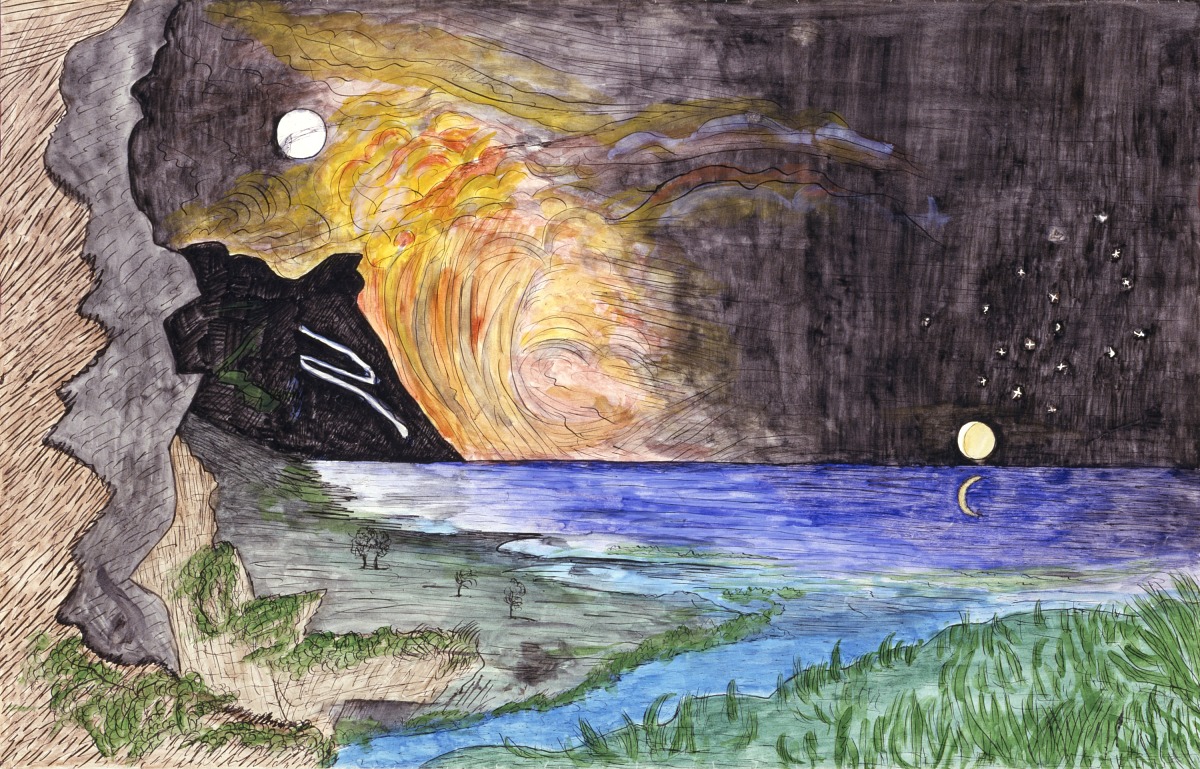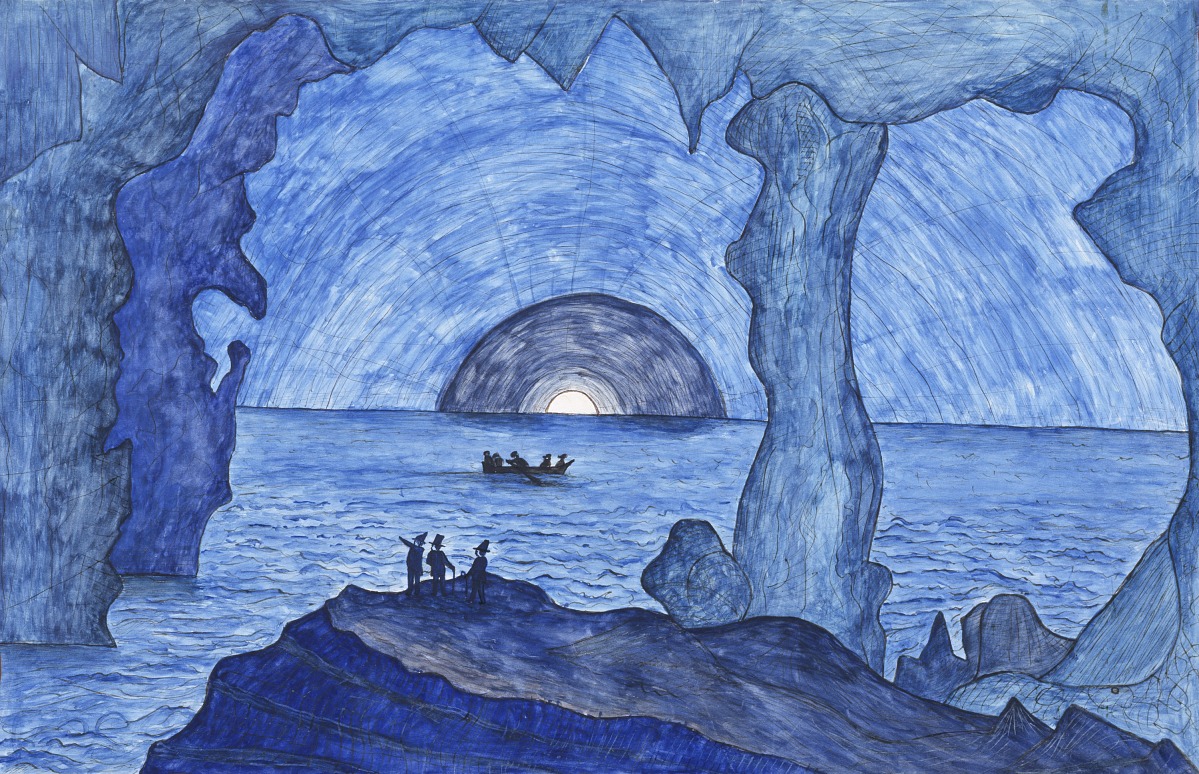

FOR GENERATIONS, HUMANS have crafted tales to make sense of the intricacies of life, impart essential lessons or explain the genesis of the universe. In the beginning, the Bible says of the origins of mankind, God formed man from dust and fashioned woman from his rib. As told in a Fulani folktale, a vast and limitless emptiness moulded man from the hatchlings of an egg and breathed life into him. In yet other African stories, man and woman emerged from the depths below where fresh water abounded or, conversely, descended from the skies above.
Whether the cornerstones of religion or the choices for bedside storytimes, these legends, however dissimilar, share tropes and character archetypes, many of them centring on higher powers — sometimes forgiving, sometimes vengeful — and humans, almost always defiant. In “The Watkins Book of African Folklore,” Helen Nde inhabits these age-old fabled worlds as created on the continent, breathing new life into them for the modern audience.
Growing up in the northwestern region of Cameroon, Nde and her siblings were often regaled with folktales and fairytales. But a life in the city and a Westernised education meant it would be years before Nde would become truly invested in traditional African stories. After years of turning to her mum to ask countless questions about these folktales, in 2020, Nde officially launched Mythological Africans, a platform that explores African myths and folklore and their source cultures.
“This is in an effort, first, to understand myself, to understand my roots, to understand the stories and the ideas that have shaped the part of the world that I come from,” said Nde, who is based in Dallas, Texas, US, and works as a data and project manager in public health. “And also to share that with the world in a way that is meaningful and hopefully help everybody, all human beings, come to a better understanding of what we bring to the planet and to our story.”
Nde began compiling folkloric stories for Mythological Africans and discussing them via a Substack, a podcast and an X account. Years later, she self-published “The Runaway Princess and Other Stories,” reworkings of women-centric folktales from Africa in the form of short stories, poetry and prose. Her dedication to folklore gained her the attention of London-based Watkins Publishing, which, in 2023, approached Nde to write a book. Luckily, she had kept meticulous notes on all the stories she had encountered over the years and was essentially primed for the task.
Published in March, “The Watkins Book of African Folklore” is an ambitious and far-reaching collection of 50 folktales from all over Africa, retold with added depth and accompanied by commentary. Nde’s choice to include stories from different countries and cultures was informed by her work with Mythological Africans, in which she tries to avoid echoing the tales that “dominate the narrative,” she said, like those of the well-known protagonist spider Anansi, hailing from Ghana and other parts of West Africa. Nde’s diverse selection for the book makes room for underrepresented mythology from across the continent.
“When we look at the old stories in particular, we really come to understand that we have more in common with each other as human beings, no matter what part of the world you're from, than we have that divides us,” Nde said. “We have the same struggles, we have the same triumphs, we have the same ambitions and aspirations. And it's right there in the stories.”
The book is grouped into three categories: “Creation Myths, Foundation Legends, Genealogies and Histories,” “Human Relationships and Institutions” and “Animal Tales.” Among them is a creation myth from Zimbabwe.
In the story, titled “The Moon and His Wives,” we meet headstrong Mwedzi, the moon, who tells — nay, begs — Mwari, the supreme celestial being, to let him go down to Earth. After much coaxing, Mwari obliges, giving Mwedzi a wife named Massassi, the morning star, who bears a bounty of grasses, bushes and trees. This is the prosperous rise before the impending fall. When Massassi dies after two years, the ever-disatisfied, ever-obstinate Mwedzi cries until Mwari gives him the strong-willed Morongo, the evening star, as his second wife. She first gives birth to animals and, later, against Mwari’s warnings, a multitude of children. As punishment, the next time Morongo gives birth, it is to a slew of dangerous creatures like lions and scorpions. The story then devolves into inevitable chaos — there is incest, an avenging snake and an oracle — before culminating in Mwedzi’s death and succession.
This is the story of creation as attributed to the Wahungwe people of the Makoni region in Manicaland, and it’s one of Nde’s favourites, owing to the unusual presence of a male moon, typically depicted as female, who is also incredibly “whiny,” and a rebellious woman who is responsible for the multiplication of humankind.
“It's a strange and funny story, but it brings together so much of what I absolutely love about folklore, that strangeness, to begin with,” Nde said. “But also, I love that it involved the celestial beings…It's easy to conceive of a relationship with a river, with a mountain, but it wasn't until I started curating Mythological Africans that I even got exposed to African conceptions of celestial bodies,” she added.

While some accounts of the stories in "The Watkins Book of African Folklore” are credited to Africans like noted Senegalese storyteller Birago Diop, many of them are drawn from publicly available documented writings by 19th- and 20th-century explorers, anthropologists, ethnographers, missionaries, linguists and folklorists from the UK, Germany, France, Canada and the US.
The earliest known recording of the Wahungwe creation myth, for example, is the work of a German explorer and ethnologist named Leo Frobenius and one Douglas C. Fox. Nde's retelling of the myth comes from Frobenius and Fox's book “African Genesis,” which was first published in 1937 and includes tales from North Africa and other Zimbabwean ethnic groups.
The foreword reveals that “African Genesis” stemmed from Frobenius’ research on rock paintings and their cultural significance, hence the illustrated versions of these paintings present in the book. “In many cases in Africa this necessitated taking down the native folk tales and myths and relating the stories and superstitions back to the paintings,” it reads.
In her book, Nde doesn’t merely regurgitate the folktales exactly as they appear in “African Genesis” or other source materials but rounds them out with texture and colour. Unlike novels, which allow for in-depth exploration, “folktales kind of have one-dimensional characters,” Nde said, which she understands but isn't fond of.
Frobenius and Fox’s account of the Wahungwe myth is mostly no-frills, beginning with a straightforward statement: Mwari made the first man and called him Mwedzi. In Nde’s telling, enriched with subtle flair, “When Mwari made the first man, he filled him with soft white light and called him Mwedzi.” Nde also exercised her creative license for some of the titles in the cases where they were absent from the source texts. She dubbed an untitled story about the first Lugbara man and woman “One Came from Above, One Came with a Big Body.”
That “The Moon and His Wives” and other selections were first documented in writing by mostly Europeans was a sticking point for Nde. It “presents the dilemma of: these are not stories told by African people; these are stories interpreted by Europeans who usually have profound misunderstandings” of what they were told, she said.
Some scholars have contested European representations of African folklore and traditional beliefs. One such example is Scottish missionary Robert Moffat’s translation of the Bible into Setswana, in which he depicts the Batswana supreme being, Modimo, as the antagonist, a portrayal denounced as a mischaracterisation.
Nde is not naive to the fact that prejudiced perceptions can result in prejudiced writing. In her commentary, she points out that the story "The Sky People,” for example, is drawn from a book titled “Woman's Mysteries of a Primitive People,” and “The Cunning Girl” is recorded in a text riddled with discriminatory language, to say nothing of the oppressive colonialist era during which some of these works emerged.
At the same time, books like “African Genesis” are the best available written sources of African folklore from bygone periods, Nde said, adding that some indigenous Africans have even validated stories catalogued by foreigners. “The fact that an American explorer is the one who wrote the book doesn't necessarily make the material in the book wrong, because a lot of the time, the informants wanted to share their cultures, just like we do now,” she said.
As she wrote "The Watkins Book of African Folklore,” Nde aimed to represent African cultures as accurately as possible using the information available to her, resting on the assumption that the stories were recorded exactly as told. While there is no “original story” — folklore shapeshifts as it's passed on, like a game of telephone — given more time and resources, Nde would’ve liked to have consulted with the people from the cultures the stories derive from.
Without sensitivity readers at her disposal, she did her due diligence to the extent that she could, fact-checking where necessary and double-checking that the spellings conformed with accepted cultural conventions. In "The Moon and His Wives,” for example, Frobenius and Fox spell Mwari as Maori. An internet search led Nde to conclude that Mwari was the correct orthography.
When Nde first began discussing African mythology online, she was one of a small group of people doing so, she recalled. And even while researching the Wahungwe creation myth, she was bothered by the notable lack of commentary on the story.
“I felt very frustrated because I bet in some Zimbabwean university somewhere, someone has written a thesis and it’s sitting in some professor's office, rotting in the corner,” she said. “I just know that so many of these stories have been analysed by people within the cultures who probably spoke with their grandparents and great-grandparents, who have such crisp and clear memories. And I just want to cry sometimes when I think about what is being lost to time, but it's the nature of things.”
With “The Watkins Book of African Folklore,” Nde is charting a path for the kind of writing she hopes to see. Simultaneously, she has watched the field of African mythology and folklore grow in the last few years, expanding across various storytelling genres. This means there is increasingly more written folklore, an apparent departure from oral-only traditions, which Nde said isn’t a bad thing. “Every culture on the planet has gone through this transition and is finding different ways to massage their stories into public discourse,” she said. With writing as one of the predominant forms of narrative, text-based folklore is a natural next step.
Still, storytelling in Africa maintains its oral roots. Even as more people take to pen and paper, folklore continues to be passed on from mouth to ear, morphing in perpetuity.
“Stand in any African bus park, listen to the stories people are telling each other. That's folklore being created right there,” Nde said. “It's not being documented. The stories being told, the jokes, the riddles, the chants, the songs — it's a dynamic process.”
A correction was made on 14 August 2025: An earlier version of this story misstated Helen Nde's place of residence. She lives in Dallas, Texas, not Atlanta, Georgia, US.